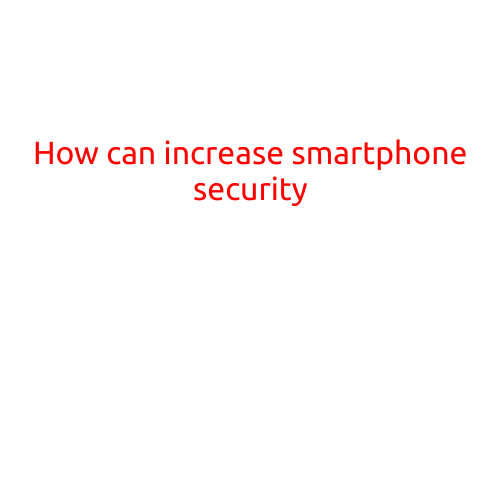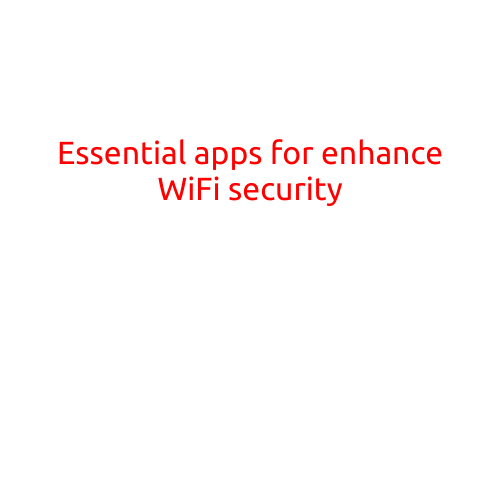
How to Increase Smartphone Security
In today’s digital age, smartphones have become an indispensable part of our daily lives. With the increasing use of smartphones, the risk of cyber attacks and data breaches has also risen. It’s essential to protect your smartphone from various threats and maintain its security. Here are some effective ways to increase your smartphone’s security:
1. Use a Strong Password and Lock Screen
A strong password and lock screen are the first layers of defense against unauthorized access to your smartphone. Set a unique password that is a combination of letters, numbers, and special characters. You can also enable biometric authentication such as fingerprint or facial recognition to add an extra layer of security.
2. Enable Two-Factor Authentication (2FA)
Two-factor authentication adds an additional layer of security to your smartphone by requiring you to provide a second form of identification, such as a verification code sent to your email or phone number, in addition to your password.
3. Keep Your Operating System and Apps Up-to-Date
Regularly update your smartphone’s operating system and apps to ensure you have the latest security patches and features. This will help prevent vulnerabilities and protect your data from being exploited.
4. Use a VPN (Virtual Private Network)
A VPN creates a secure and encrypted connection between your smartphone and the internet, making it difficult for hackers to intercept your data. This is especially important when using public Wi-Fi networks.
5. Use a Secure Browser
Use a secure browser such as Google Chrome or Mozilla Firefox, which has built-in security features such as SSL encryption and ad blocking.
6. Be Cautious When Downloading Apps
Only download apps from authorized app stores such as Google Play or Apple App Store. Check the app’s permissions and reviews before installing to ensure it’s legitimate and trustworthy.
7. Use Antivirus Software
Install antivirus software to scan your smartphone for malware and viruses. This will help detect and remove any threats that may be lurking on your device.
8. Enable Disk Encryption
Enable disk encryption to protect your device’s data in case it’s lost or stolen. This will make it difficult for unauthorized users to access your data.
9. Use a Cloud-Based Backup
Use a cloud-based backup service such as Google Drive or Apple iCloud to backup your data regularly. This will ensure that your data is safe and can be restored in case your device is lost or stolen.
10. Monitor Your Activity and Data
Regularly monitor your smartphone’s activity and data usage to detect any suspicious behavior. Check your device’s settings to see which apps have access to your location, contact information, and other personal data.
11. Disable Bluetooth and GPS When Not in Use
Disable Bluetooth and GPS when not in use to prevent unauthorized access to your device. This will also help conserve battery life.
12. Use a Secure Messaging App
Use a secure messaging app such as Signal or WhatsApp, which uses end-to-end encryption to protect your messages and conversations.
In conclusion, increasing smartphone security is a crucial step in protecting your personal data and preventing cyber attacks. By following these simple steps, you can significantly reduce the risk of your smartphone being compromised. Remember to always be cautious and vigilant when using your smartphone, and take the necessary steps to protect your device and data.





